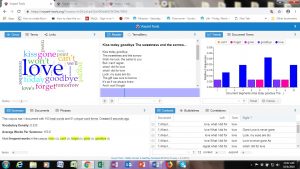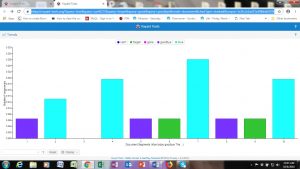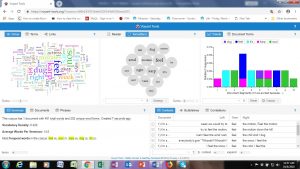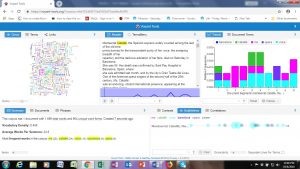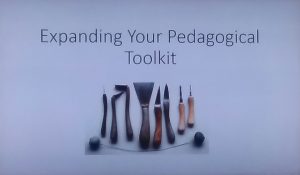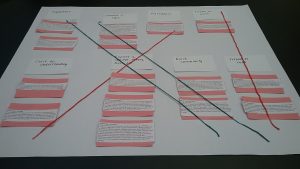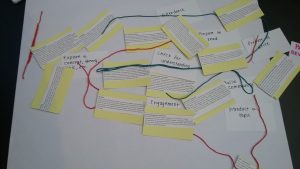I’ve been savoring the Ramsay reading and also trying to digest the Drucker reading.
Ramsay is now on my desk next to Walter Benjamin and Adorno & Horkheimer as an essay with LONG legs.
I’m loving his writing style and am resonating to phrases such as “soul-crushing lack of order” to describe Web 1.0.
I appreciated the “design your own path through culture” rather un-scholarly path that he recounts about the Frank Zappa/Varese axis (via Look magazine no less!) Amazing how he applies this to illustrate the differences between “search” and “browsing” and how “search”, in my opinion, is killing all the creativity in all of us.
As much as I’m nearly always engaged in the “purposive experience” I have always truly valued the “serendipitous experience”. The thing that falls into your lap. The puzzle piece you find without looking. LOVE those moments.
So I actually had a WHOLE different kind of weekend courtesy of Ramsay’s writing which gave me permission to BROWSE again. While I also did have to “search” in my weekend studies, my mindset felt different, and being bombarded by all the “prescripted” yields didn’t bother me as much. Thank you, Stephen Ramsay! And anyone who can riff on Erasmus AND Barthes et al is a hero in my book, all pun. (I’ve studied Barthes at length for my MA in Media Studies and tweeted about his essay Camera Lucida on #dhintro18.)
Now, on to Drucker, wow…
Having read many screenplays, which sometimes give cues to the readers/actors such as shy, bold, flirtatiously, etc. I was wondering if she was citing a famous scene from a well-written screenplay when I came upon the infamous p. 12-13 section with flirting as an XML example. I was so perplexed about it that I took to search (apologies to Ramsay) and Googled:
“why does johanna drucker use flirting as XML example in speclab?”
Here are the results: DruckerFlirtingExampleGoogleSearchYieldScreenShot
Hannah’s “hot take” post is in the Top 10 search yield results for my Googled question.
I realized the Drucker passage is not from a screenplay and I also got a clue toward WHY she uses flirting, from the search yield results, due to a sentence being highlighted, which I’d also highlighted while reading:
“In the [flirting] example… the concept of ‘flirtation’ is far more elastic than that of ‘conversation'”.
My first thought to myself was, why didn’t she use a less charged example like coughing to demonstrate a concept far more elastic than conversation?
So I have to wonder if she purposely used “flirting” to inject a feminist agenda, much like Donna Haraway does in The Cyborg Manifesto. Maybe I’m reading in to it too much.
Personally speaking, the flirting example coming so early on in the reading was distracting to me. I was simultaneously trying to rectify flirting as an XML example while also trying to grasp the data science of XML which Drucker attempts to illustrate through it. Very circuit jamming. And it catalyzed the conversation over in Hannah’s “What the hell, Drucker?” thread about using this very flawed “sexist” example to demonstrate plasticity in XML (agreed) which Patrick noted to Hannah detracted from the XML itself (also agreed).
So, in my opinion, while Ramsay is successful in illustrating search/browse with the unique example of Zappa/Varese, Drucker is not as successful in illustrating XML with her unusual choice of flirting.
Back to savoring Ramsay after some dinner…
